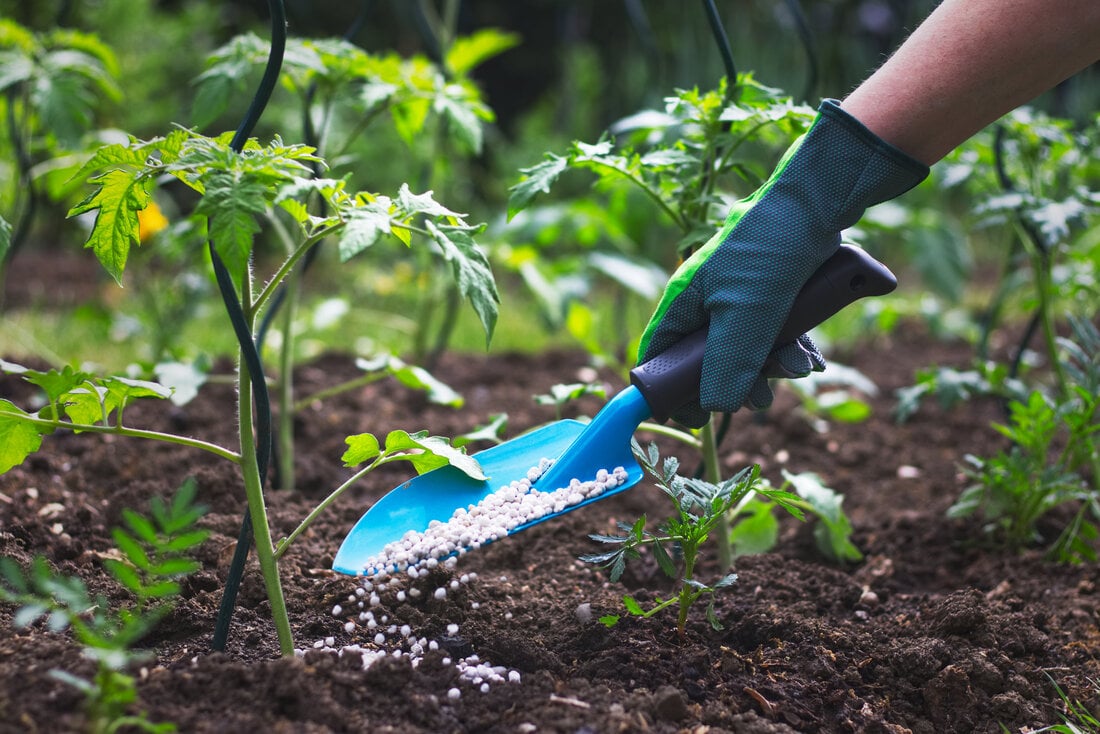

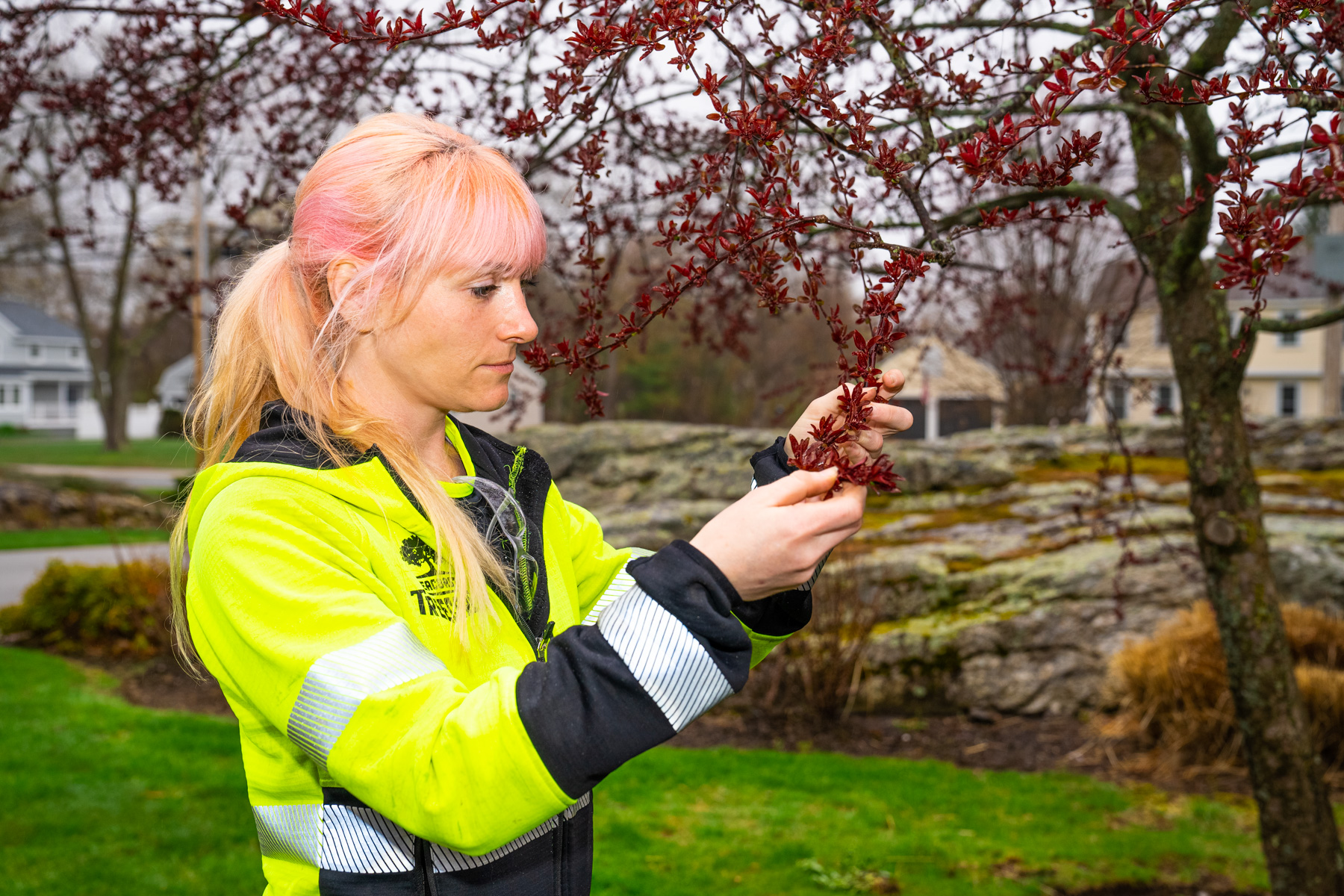
If you’re like a lot of homeowners, you might assume that trees are self-sustaining for the most part. You may have one or more trees on your property that you’ve never really done much to (in terms of care) and they still seem to be okay.
But the truth is, trees actually require quite a bit of upkeep and care if you truly want to keep them healthy. If you aren’t performing services like fertilization, pruning, and pest and disease management, you’re not going to get the longest possible lifespan out of your tree.
In this article, we’ll talk about the services necessary to maintain healthy trees. When you properly care for a tree, you’ll not only get more longevity out of it, but you’ll minimize its potential of becoming a liability or having problems.
We’ll provide tree care tips including how to keep trees healthy to remove the guesswork of proper tree maintenance.
Healthy trees have characteristics that you’d expect like green leaves, hearty branches, bark that is durable and intact, and ongoing growth. But what are some of the signs that your tree is not as healthy as it should be (or is potentially struggling with a problem)?
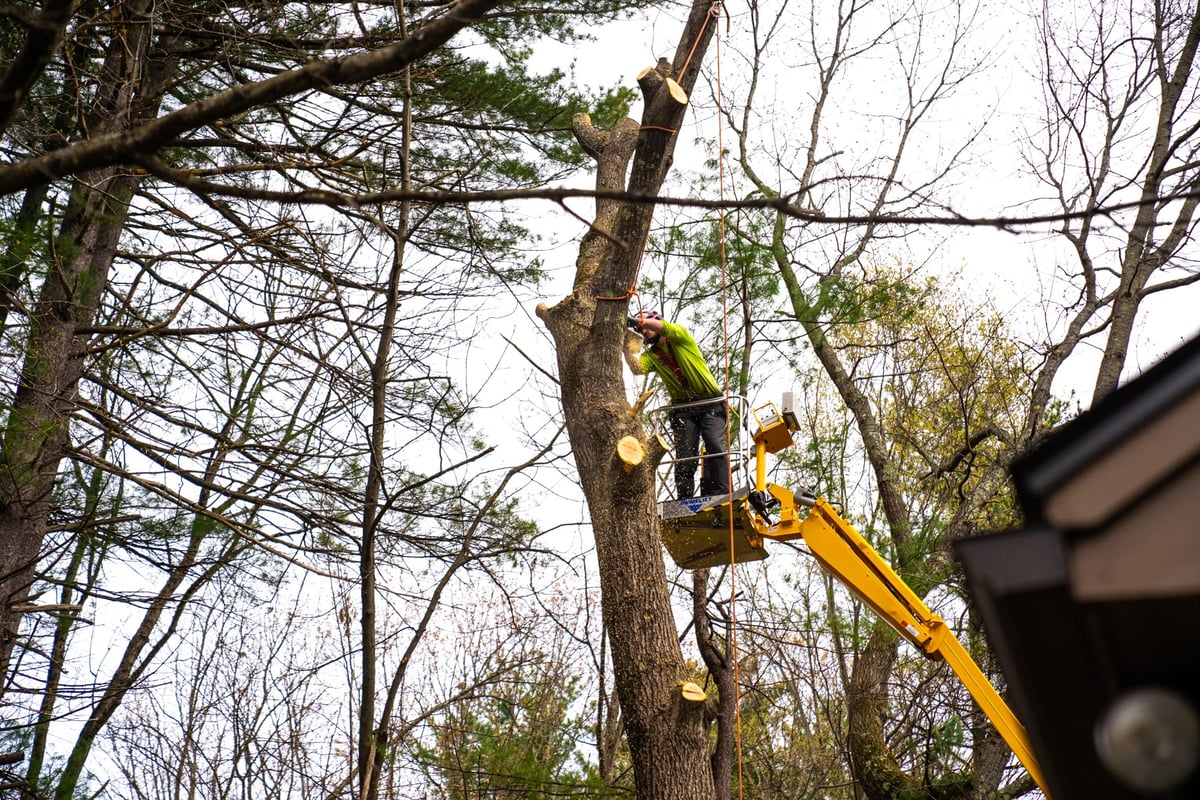
There are many potential signs that a tree might be unhealthy or even signs that it needs to be removed. Here are just some to watch out for.
Trees can be unhealthy due to a number of potential problems including disease or pest infestation, drought conditions, storm damage, lack of nutrients, and more.
The trouble is, that a tree might already be struggling before it shows any outward sign of a problem. By the time it does have symptoms, it might already be pretty far gone. While some problems are fixable, others could mean the ultimate death of the tree.
Fortunately, many problems are also preventable. Understanding how to care for a tree can help you avoid problems down the line.
There are a few important steps you can take to promote healthy trees. Let’s talk about tree pruning, fertilization, and disease/pest management.
One of the best things that you can do for the health of your tree is prune them.
Tree pruning is the process of removing specific branches in order to benefit the tree as a whole. It involves making strategic cuts to remove diseased, dead, or dying wood.
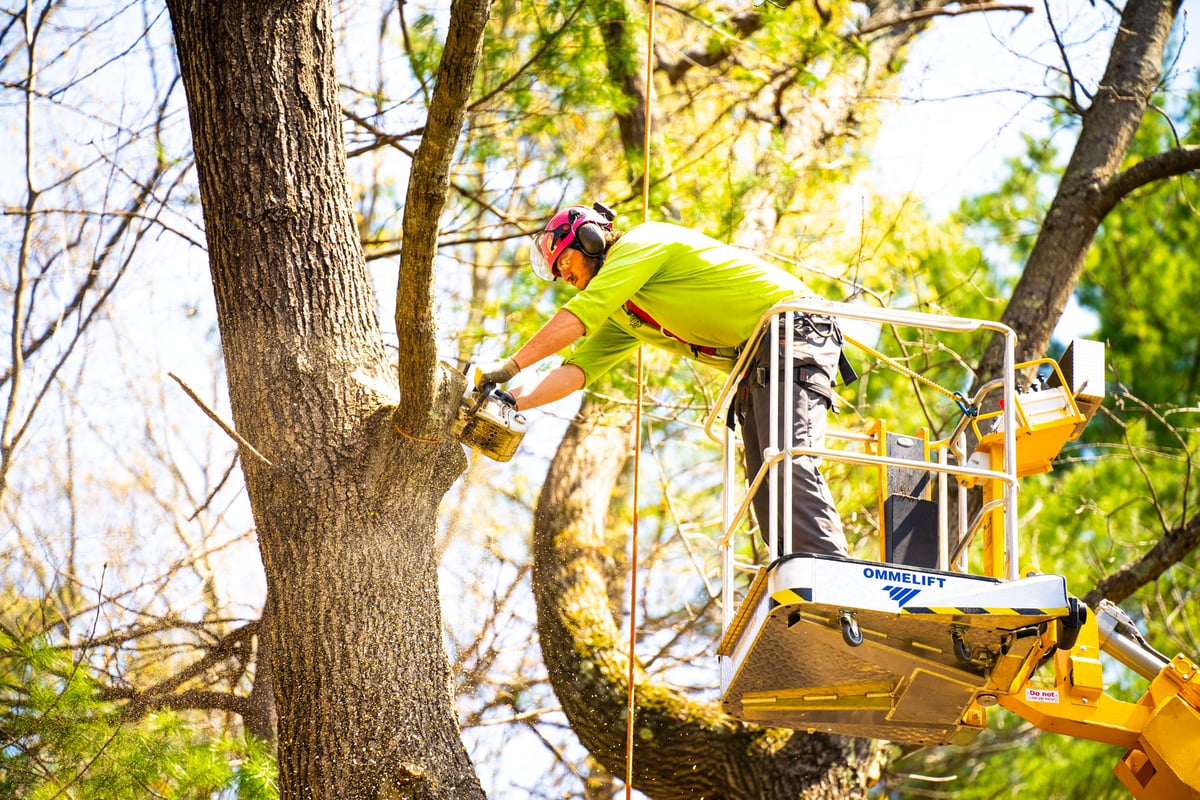
The key is that this service be performed properly. Tree pruning can actually harm a tree if it’s not done correctly. This is why this service is best completed by a pro.
When your tree is properly pruned, you’re likely to notice an improvement in its health. Good tree pruning can lead to tree longevity and overall improved performance. This is an excellent way to promote healthy trees.
Tree care in New England should also involve fertilization.
Trees on a residential property won’t get the same nutrients that would be readily available in the forest which is why tree fertilization in New England is so valuable.
Fertilizing your trees provides important nutrients that can boost their health and performance. The truth is, your trees and shrubs are only as healthy as the soil they’re growing in. That’s why at Seacoast Tree Care, we combine organic fertilizer that is low in nitrogen with biostimulants to introduce healthy microorganisms into your soil.
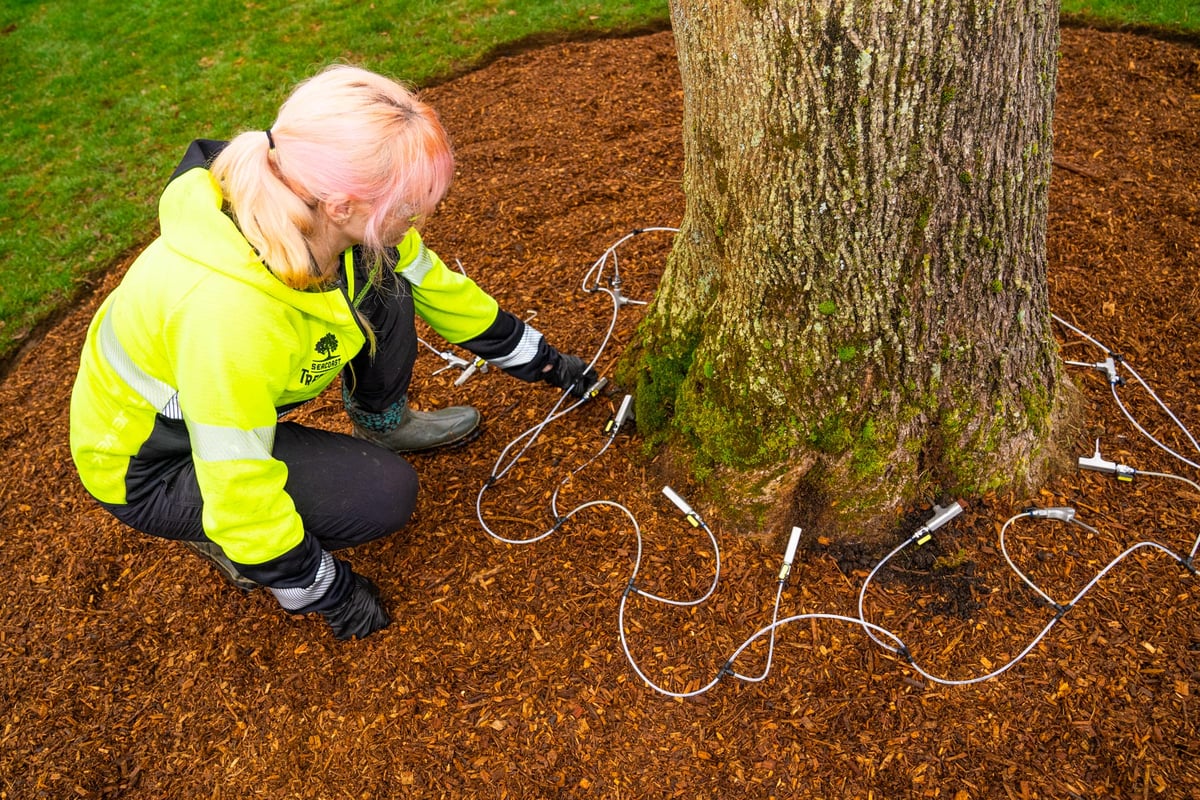
One of the key benefits of fertilizing your trees and shrubs is that it should help to produce greener and overall healthier plants. The residential soil just isn’t supplying all of the nutrients that your plants need to thrive. But fertilizer will help.
Fertilization will also help stimulate growth. And it will help promote the longevity of your property’s trees.
It’s important to note that we’re not talking about the cheap tree spikes sold at the local hardware store. These do very little good for your tree as they don’t deliver the nutrients deep enough. We’re talking about deep root fertilization in which high-quality fertilizer is injected deep into the root zone where it’s needed.
Finally, we also want to talk about the importance of managing diseases and pests for long-term healthy trees.
Even if you do all the right things, health problems sometimes just happen. Certain tree species are more prone to problems. For instance, Ash Trees are susceptible to the Emerald Ash Borer.
Here in New England, we also frequently deal with the Hemlock Woody Adelgid and the Winter Moth.
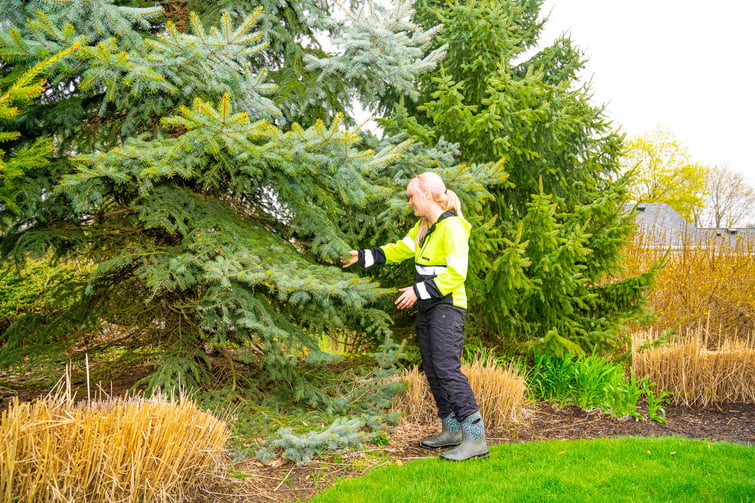
There are also some tree diseases to be aware of including Apple Scab, Anthracnose, and Leaf Spot, to name just a few.
Beech Leaf Disease is another common problem in our region. Beech Leaf Disease is said to be spread by nematodes (microscopic roundworms), which damage the leaf tissue and can eventually kill the entire tree.
Fortunately, with the right treatment, many disease and pest problems can be corrected. Often, they can also be prevented. It’s important to work with a tree care expert to determine if you have any tree species that are particularly prone to problems and how you should address them.
Spotting signs of tree diseases in New England as early as possible is important.
As you might imagine, tree diseases are most easily managed in their early stages. Any time that you can get ahead of a problem before it becomes more severe is optimal. Of course, prevention is always best when possible.
While homeowners are sometimes tempted to try DIY tree care, it’s something that we strongly advise against. That’s because trees are a lot more complicated than people tend to realize.
It’s not uncommon for different tree problems to mimic one another and make it difficult for you to figure out what’s going on.
Along with that, services like tree pruning are quite complex and involve the use of heavy equipment. Since improper tree pruning can harm the health of your tree, it’s not worth the risk.
At the end of the day, it’s important to partner with the right tree services to ensure the best results.
Ultimately, you want to find a company that has your best interest at heart and that you can build a long-term relationship with. Your property requires ongoing care and it’d be great to partner with a company that you truly trust.
At Seacoast Tree Care, we take the work that we do quite seriously. We started our business with the belief that we are here to care for and protect trees whenever we can. However, when they do have to come down, it must be done right. That’s why we also offer tree removal when it’s necessary.
We are committed to preserving trees in the New England area by performing all the vital services needed to promote healthy trees.
Ready for healthier trees at your Southern New Hampshire, Maine, or Massachusetts home? Request your consultation and have your New England trees evaluated. By making a wise choice, you’ll know your trees are in good hands.